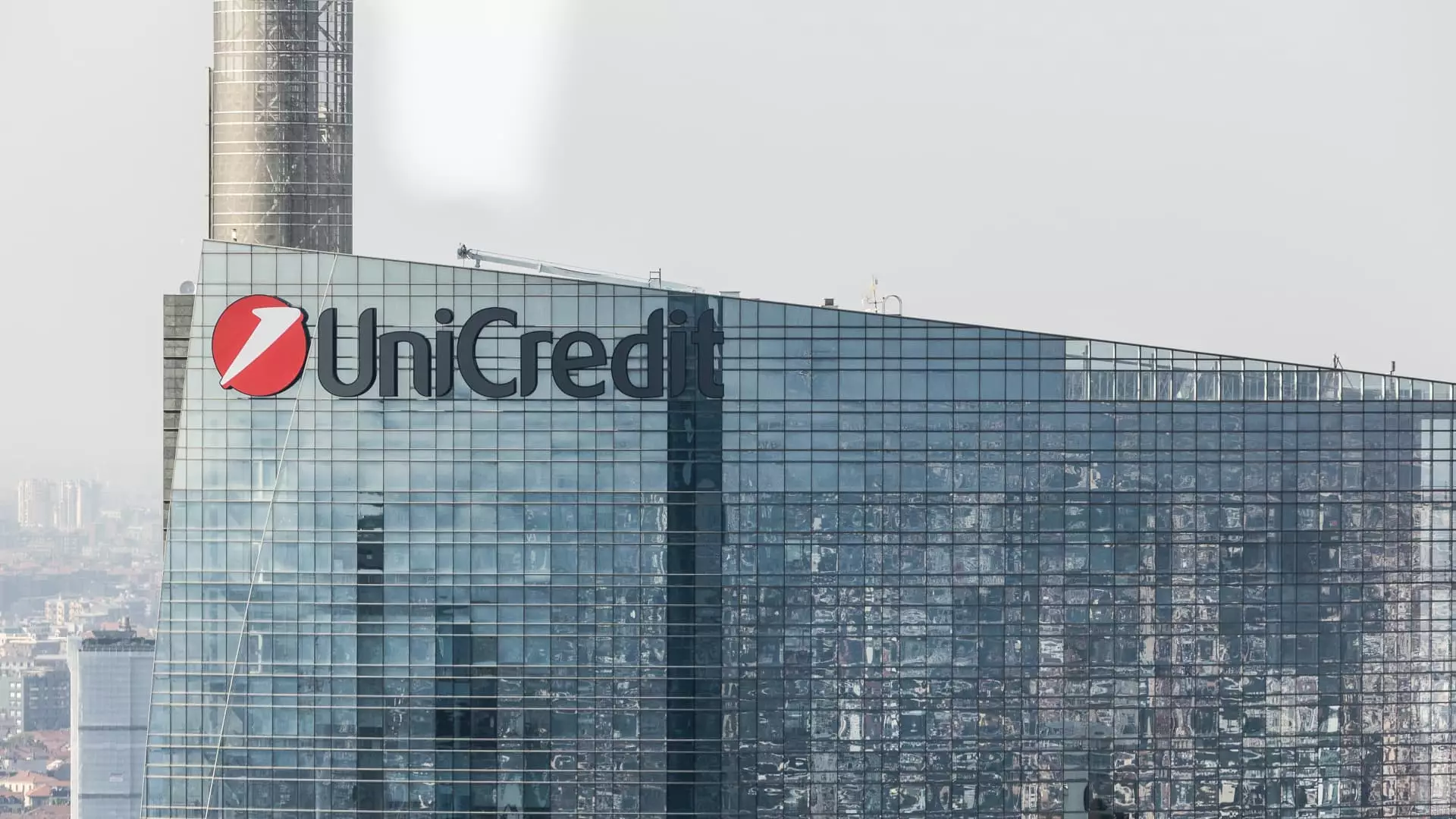On Wednesday, Italy’s UniCredit made headlines by announcing an increase in its stake in the German bank Commerzbank to 28%. This development, which involves a combination of direct and derivative investments, marks a significant shift from its prior stake of 21%. As the second-largest bank in Italy, UniCredit’s maneuver raises critical questions regarding the future of banking in Europe and the implications of such strategic transactions on financial markets.
Context of the Stake Increase
The decision to boost its stake comes at a time when UniCredit’s CEO, Andrea Orcel, is concurrently pursuing a buyout of Banco BPM in Italy. The new structure of UniCredit’s holdings in Commerzbank now includes a direct stake of 9.5% coupled with approximately 18.5% from derivative instruments. This indicates a growing confidence in Commerzbank’s potential amidst ongoing transformations in the banking sector, which underscores UniCredit’s aspiration to enhance its market position in Germany—a prominent European economy.
UniCredit’s actions can be viewed as a testament to its belief in the latent value within Commerzbank that has yet to be fully realized. The Italian bank articulated its strategy through a press release, emphasizing the critical role of a robust banking sector in driving Germany’s economic prosperity. Orcel’s strategy reflects a forward-thinking approach that aims not only to capitalize on Commerzbank’s strengths but also to leverage synergies that could arise from a potential merger.
The bank’s current position, however, is rigorously categorized as an investment initiative with no immediate plans for a complete takeover. This caution is prudent, particularly given that Orcel has made substantial moves domestically and must balance international ambitions with the operational complexities of merging cultures and strategies in a potential deal.
In response to UniCredit’s announcement, Commerzbank noted its awareness of the stake increase but refrained from detailed commentary pending an upcoming strategy update scheduled for February. Such hesitance reflects an awareness of the complicated dynamics at play, not only within the financial markets but also influenced by political sentiments in Germany. The German government, which holds a 12% stake in Commerzbank, has historically been apprehensive about foreign takeovers in national financial institutions, particularly in light of its own recent political instability.
With the ruling coalition’s turbulence and the clearance of potential elections in February, the political backdrop is ever-changing, adding complexity to negotiations. The sentiment among government’s circles has so far leaned against Orcel’s acquisition designs, which could complicate UniCredit’s plans for a merger.
From a market perspective, the news of UniCredit’s increased stake has had a favorable reception, with shares rising for both UniCredit and Commerzbank shortly after the announcement. Investors appear to be optimistic about the potential for synergies particularly in capital markets and trade finance that could arise from a merger.
However, analysts remain cautious, suggesting that UniCredit may need to revise its approach in order to align with the geopolitical realities and regulatory frameworks in both Italy and Germany. As the banking landscape adapts to new economic challenges, the unfolding story of UniCredit and Commerzbank will serve as a significant case study in international banking collaborations and market consolidation strategies.
UniCredit’s decision to increase its investment in Commerzbank signals a strategic pivot in the European banking sphere. As potential synergies and geopolitical challenges continue to evolve, the outcomes of these moves will not only affect the banks involved but also the broader financial framework within the continent. Both UniCredit and Commerzbank, alongside regulatory bodies and investors, must navigate the complexities of this situation to harness the opportunities presented while mitigating risks. The coming months will be crucial in defining the future trajectory of both banks amidst an uncertain yet promising economic landscape.

